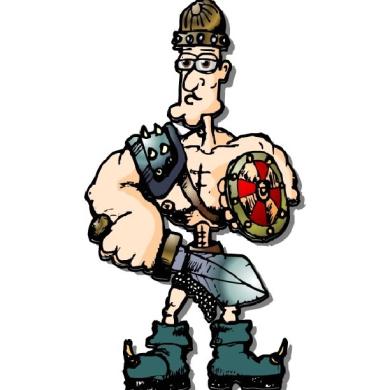Source: Burrows, J.a. A: Reading Of Sir Gawain And The Green Knight. New York: Barnes And Noble, 1966
This document was uploaded by user and they confirmed that they have the permission to share it. If you are author or own the copyright of this book, please report to us by using this DMCA report form. Report DMCA
Overview
Download & View Source: Burrows, J.a. A: Reading Of Sir Gawain And The Green Knight. New York: Barnes And Noble, 1966 as PDF for free.
More details
- Words: 258
- Pages: 15
Source: Burrows, J.A. A Reading of Sir Gawain and the Green Knight. New York: Barnes and Noble, 1966.
The Character
Courageous and brave
Flawless
example of Christian
chivalry Flawed
everyman
Element of Romance Set in a remote place and time Incorporates the marvelous and miracles Hero is superior to other men and his environment May involve “Testing Plot”
Testing Plot Tester is unrealistic and remote Test is extreme Hero follows the higher of conflicting virtues Tester relents and allows hero to fulfill lower virtue
Departs from Romance Calendar time/ real places Hero is one of us, not superior Tester is split: Morgan and Bercilak Gawain fails the test because he is human and sinful Mixture of romance and realism
Main Characters Arthur: King of Camelot Sir Gawain: Representative, not elect Green Knight: Ambiguous nature Green body-supernatural Green and gold equipment-courtly youth Holly bob-life and peace Axe-war
The Game Governed by rules Tests important knightly virtues Involves seemingly inevitable death
Code of Chivalry Posses faith in God Loyal to people, principles, and promises Without deceit Upright and Virtuous
The Five Virtues Generosity Companionableness Courtesy Pure mind Compassion
Recognition The
Green Knight
The
exchange game was the real test
Confession Shame and mortification Statement of Sin: Gawain admits cowardice, covetousness, and untruth Request for penance
Condemnation Gawain
did sin Sin was from love of life, not malice Problem of shifting blame to women
Thematic Points Openness
and ambiguity Combination of romance and realism Gawain is human/sinful
Sir Gawain’s “human experience” Social
living Alienation Self-discovery Desolation Recovery and Restoration
The Character
Courageous and brave
Flawless
example of Christian
chivalry Flawed
everyman
Element of Romance Set in a remote place and time Incorporates the marvelous and miracles Hero is superior to other men and his environment May involve “Testing Plot”
Testing Plot Tester is unrealistic and remote Test is extreme Hero follows the higher of conflicting virtues Tester relents and allows hero to fulfill lower virtue
Departs from Romance Calendar time/ real places Hero is one of us, not superior Tester is split: Morgan and Bercilak Gawain fails the test because he is human and sinful Mixture of romance and realism
Main Characters Arthur: King of Camelot Sir Gawain: Representative, not elect Green Knight: Ambiguous nature Green body-supernatural Green and gold equipment-courtly youth Holly bob-life and peace Axe-war
The Game Governed by rules Tests important knightly virtues Involves seemingly inevitable death
Code of Chivalry Posses faith in God Loyal to people, principles, and promises Without deceit Upright and Virtuous
The Five Virtues Generosity Companionableness Courtesy Pure mind Compassion
Recognition The
Green Knight
The
exchange game was the real test
Confession Shame and mortification Statement of Sin: Gawain admits cowardice, covetousness, and untruth Request for penance
Condemnation Gawain
did sin Sin was from love of life, not malice Problem of shifting blame to women
Thematic Points Openness
and ambiguity Combination of romance and realism Gawain is human/sinful
Sir Gawain’s “human experience” Social
living Alienation Self-discovery Desolation Recovery and Restoration
Related Documents

Sir Gawain+ Green Knight Model Sheets
April 2020 9
Barnes And Noble
June 2020 4
Barnes & Noble Presents : The Films Of
June 2020 4
Energy And New York City
June 2020 11
